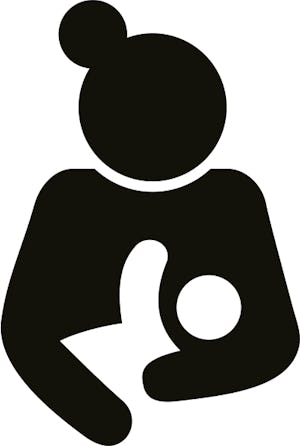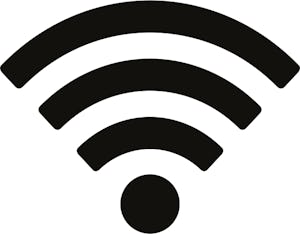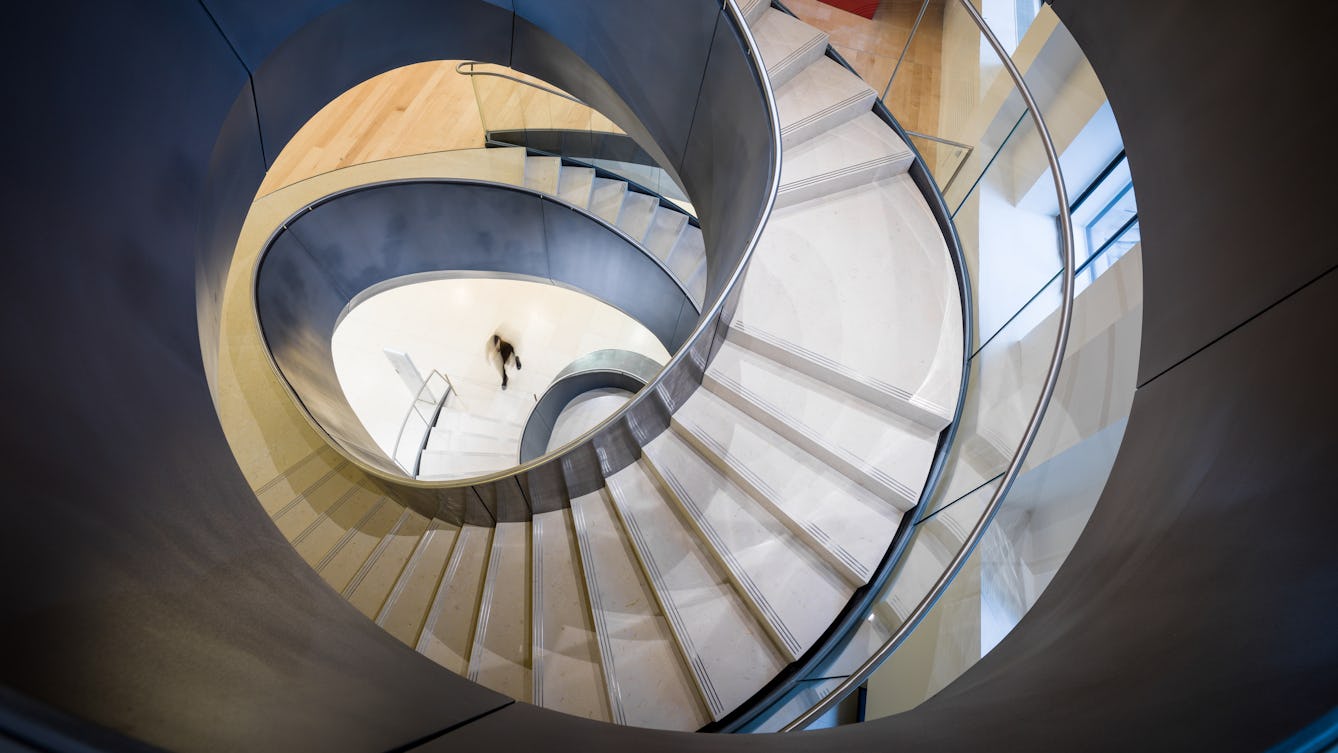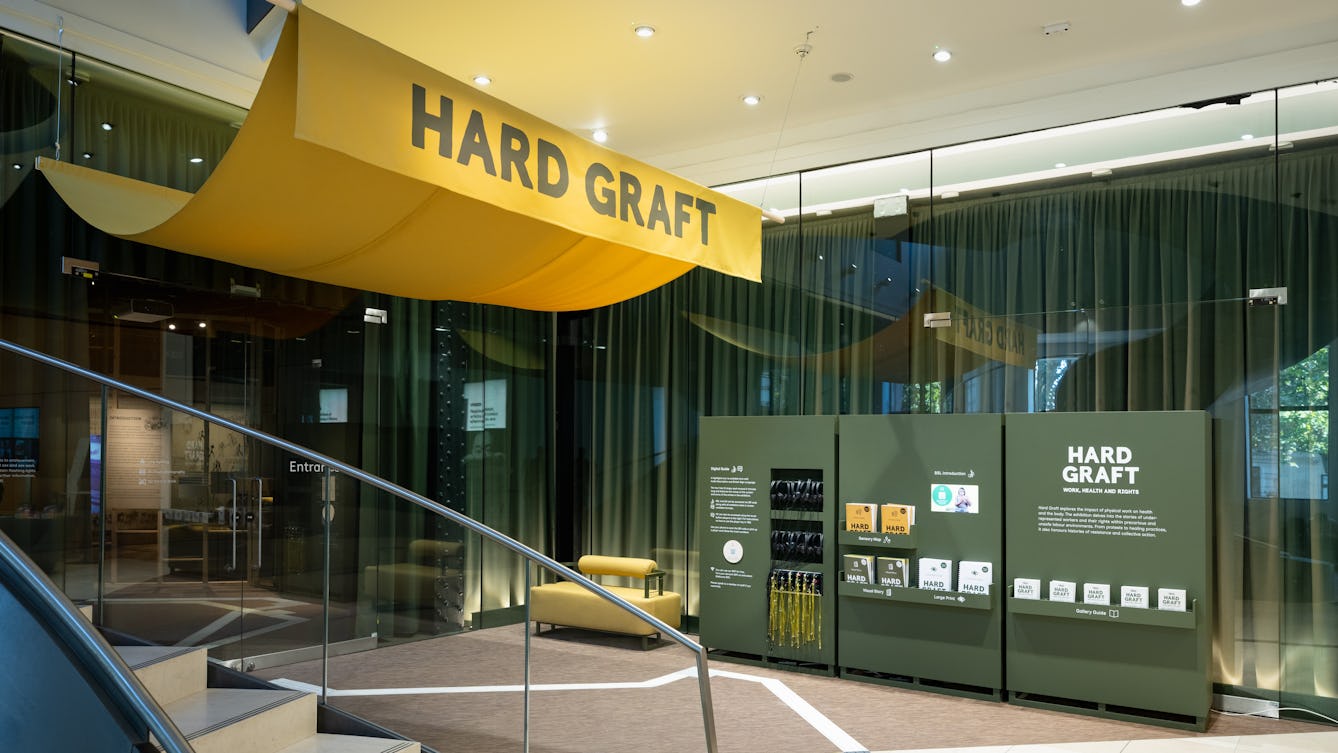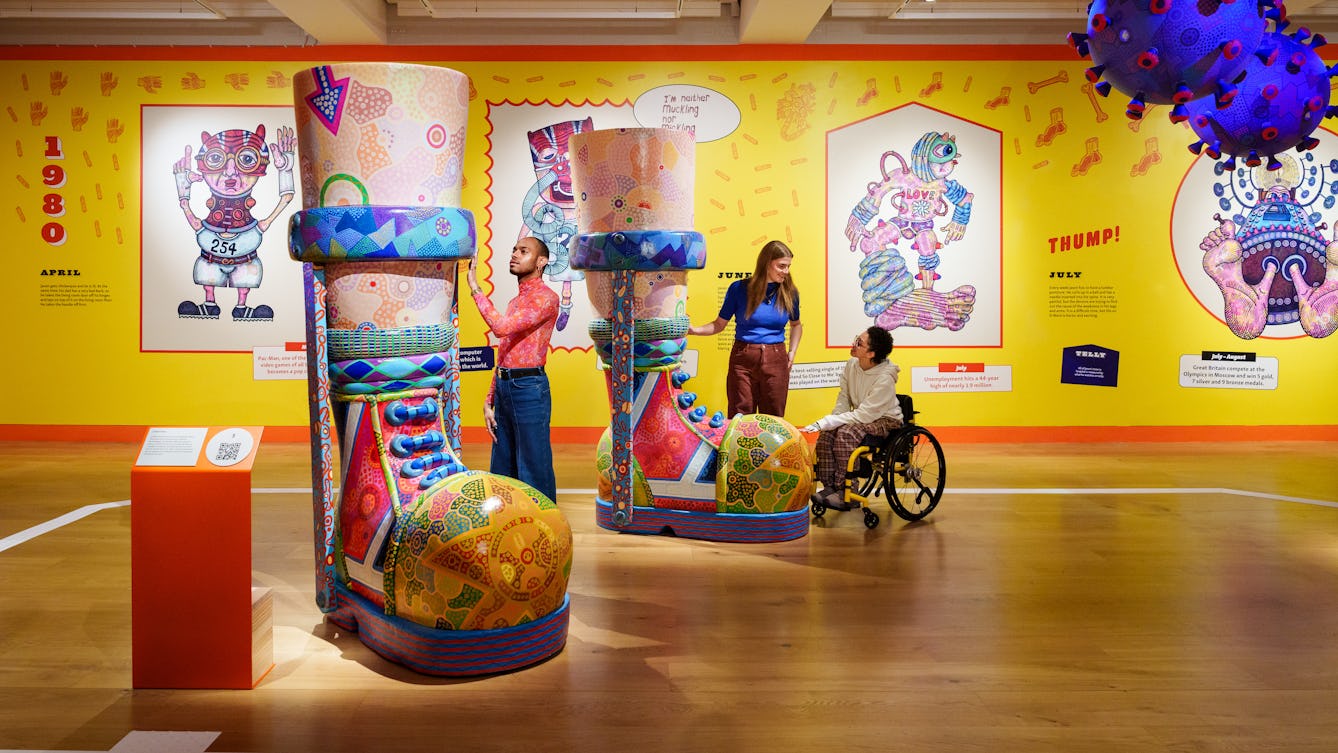Information to help you plan and prepare for your visit to the exhibition.
Introduction to The Kola Nut Cannot Be Contained
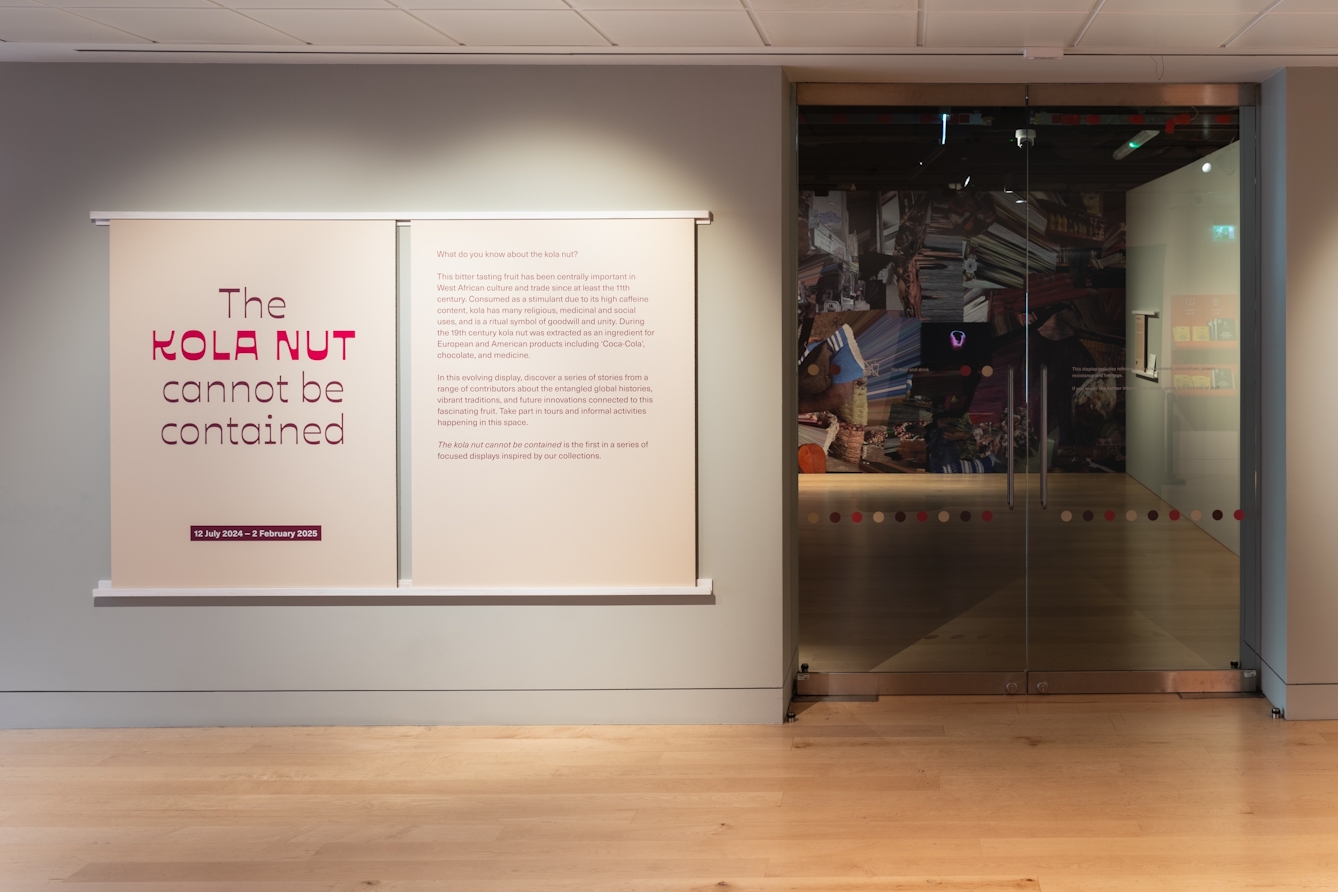
This exhibition is called ‘The Kola Nut Cannot Be Contained’.
An exhibition is a collection of things to look at and learn about.
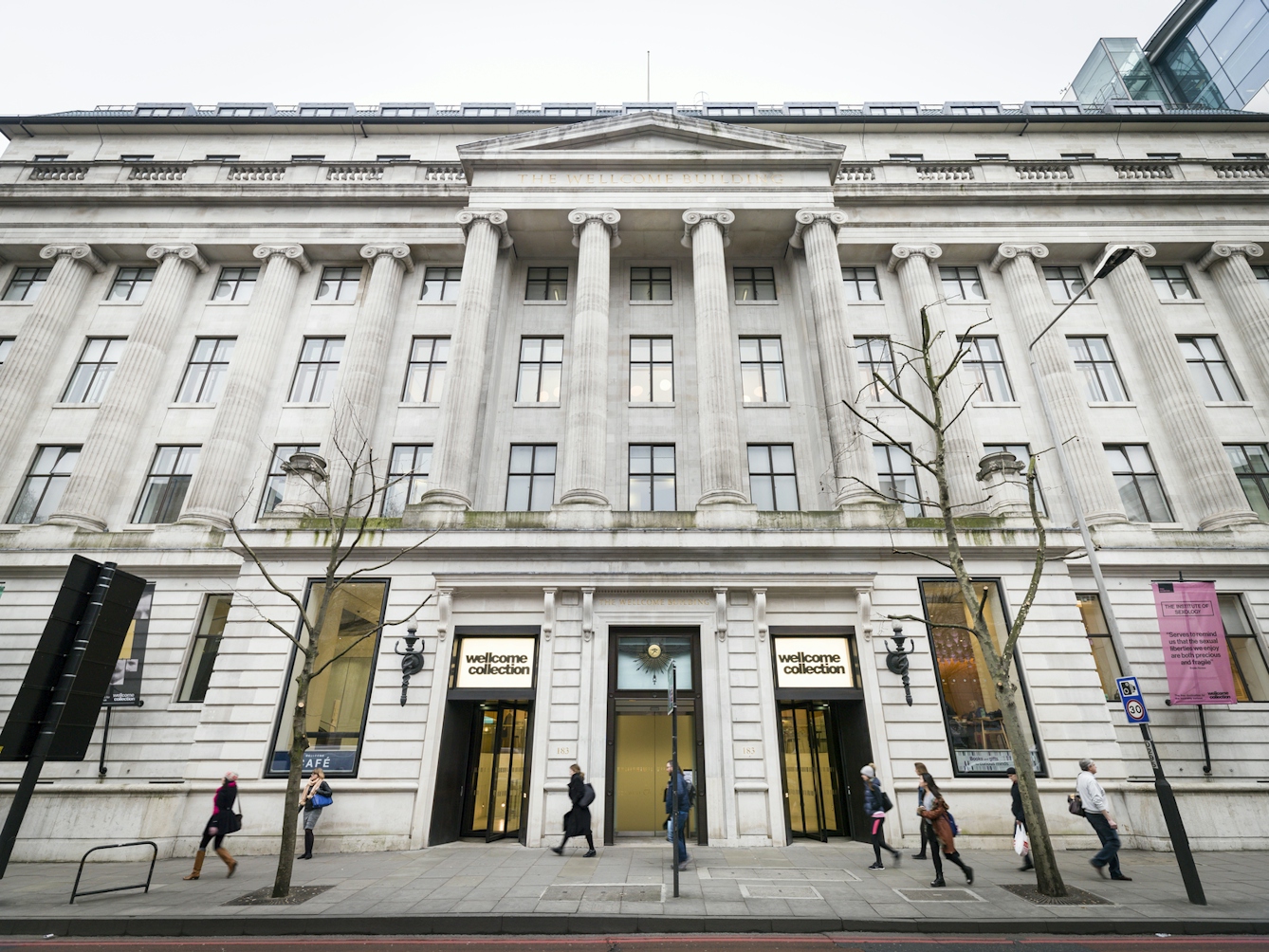
The exhibition is at Wellcome Collection.

The exhibition is in Gallery 3 on level 1 of our building.
Visiting Wellcome Collection
For more information about:
- opening times
- accessibility
- travel
click on this link: Visiting Wellcome Collection visual story.
About the exhibition
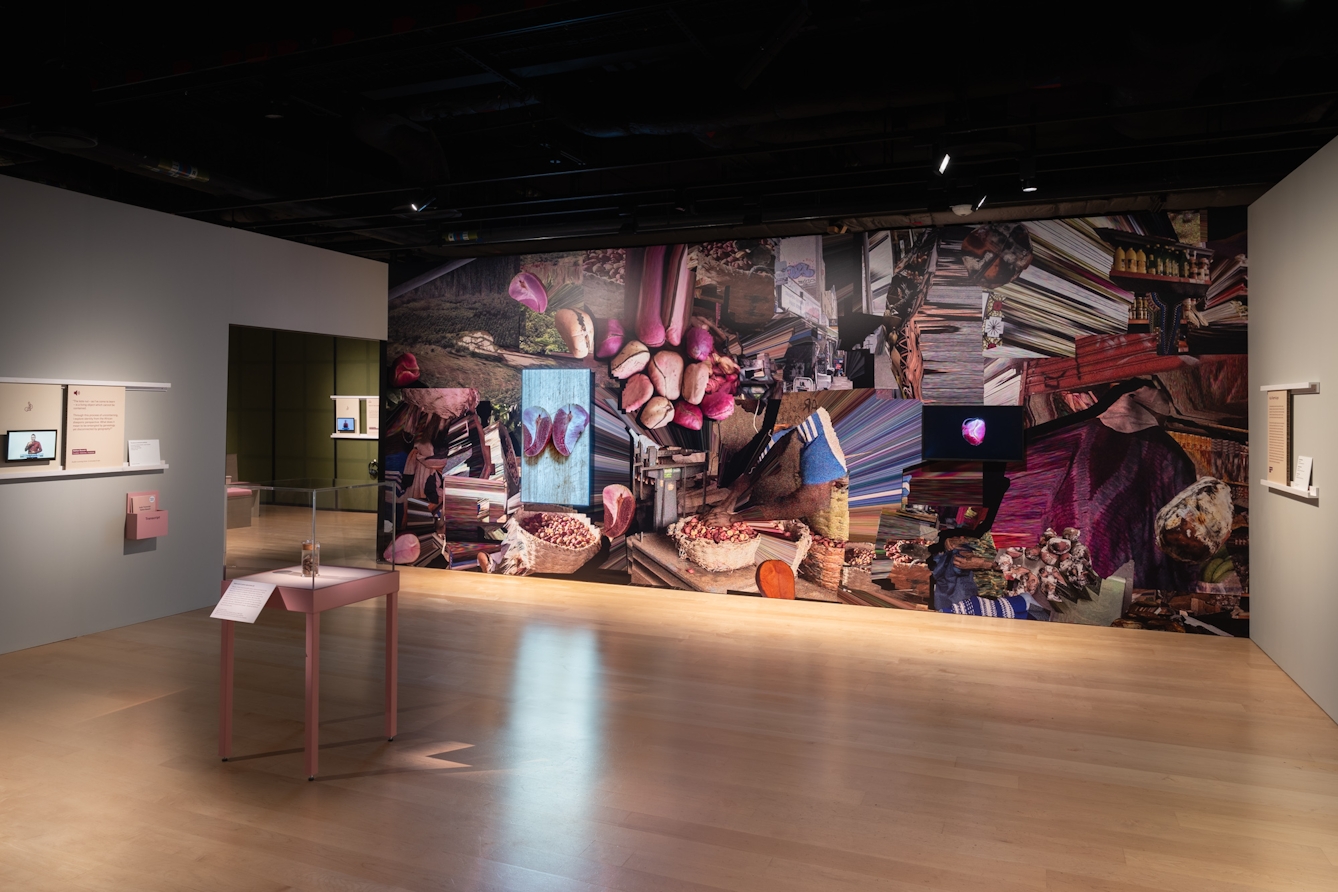
‘The Kola Nut Cannot be Contained’ is a small exhibition about the kola nut.
The kola nut is a small fruit that grows on trees in West African forests.
This exhibition tells many different stories about the kola nut.
The exhibition will be open for six months. We will add more stories while the exhibition is open.

The exhibition is in Gallery 3 on level 1.
What is in the exhibition
There are different things to look at and listen to in the exhibition. These include:
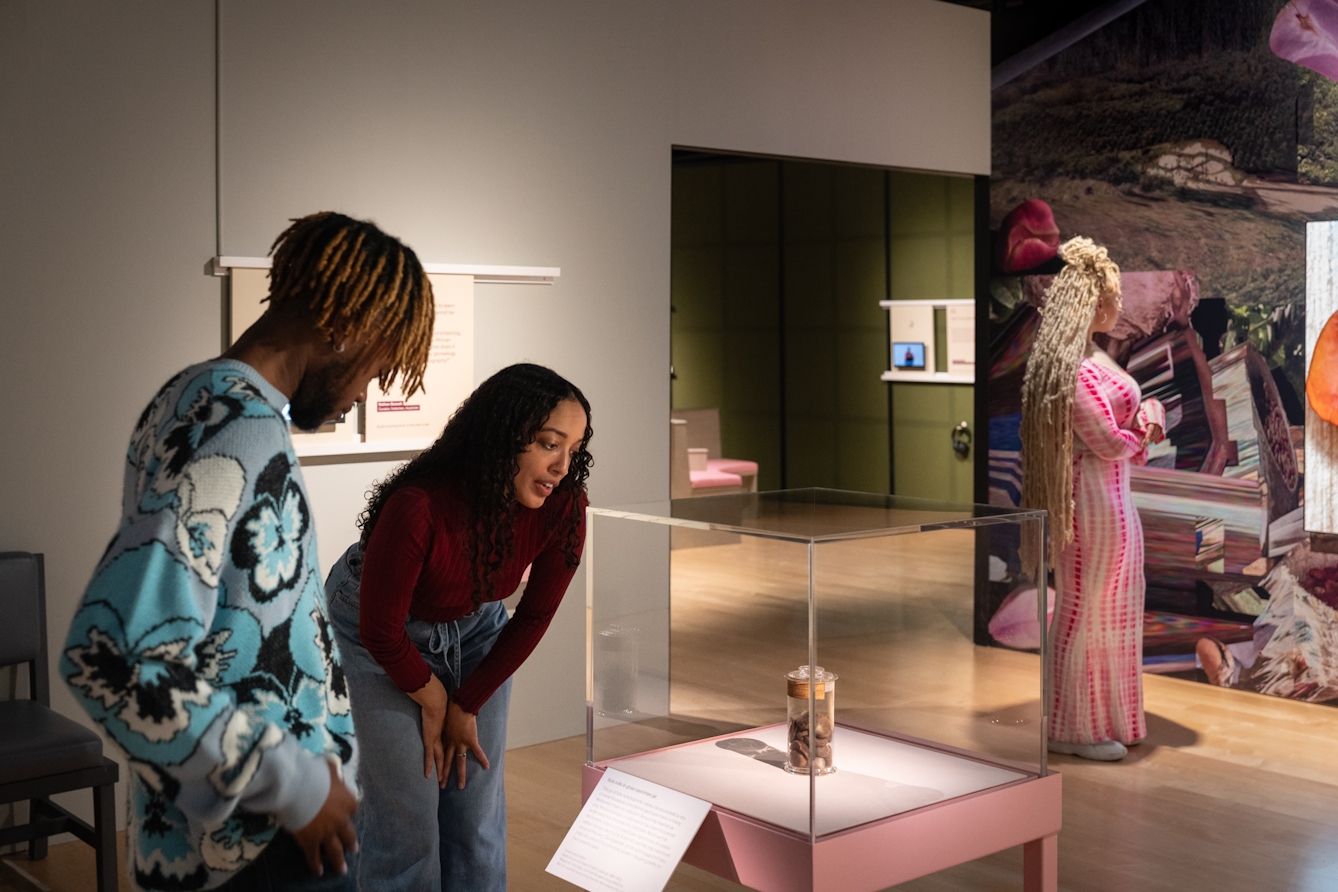
Objects, books and artworks
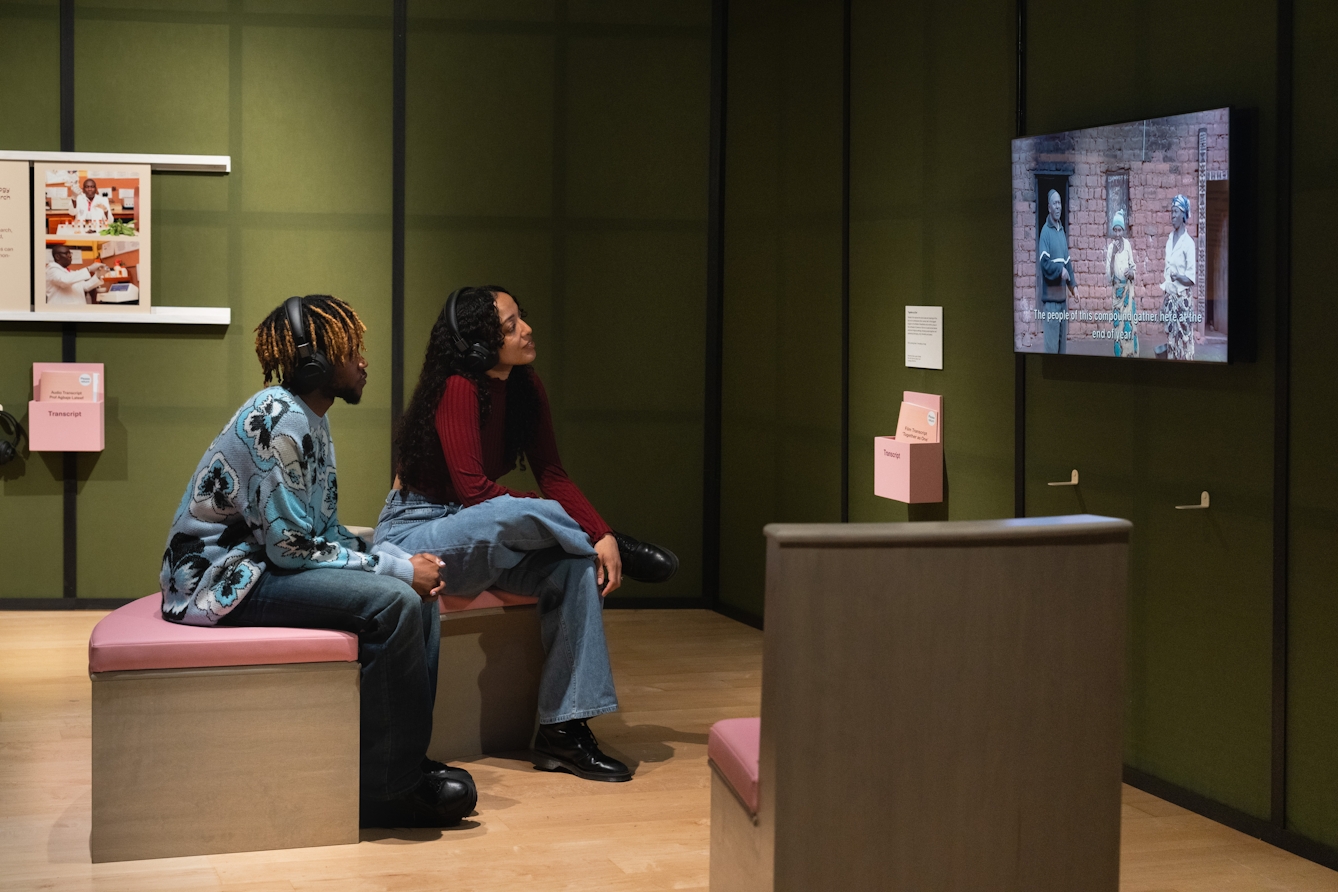
Films
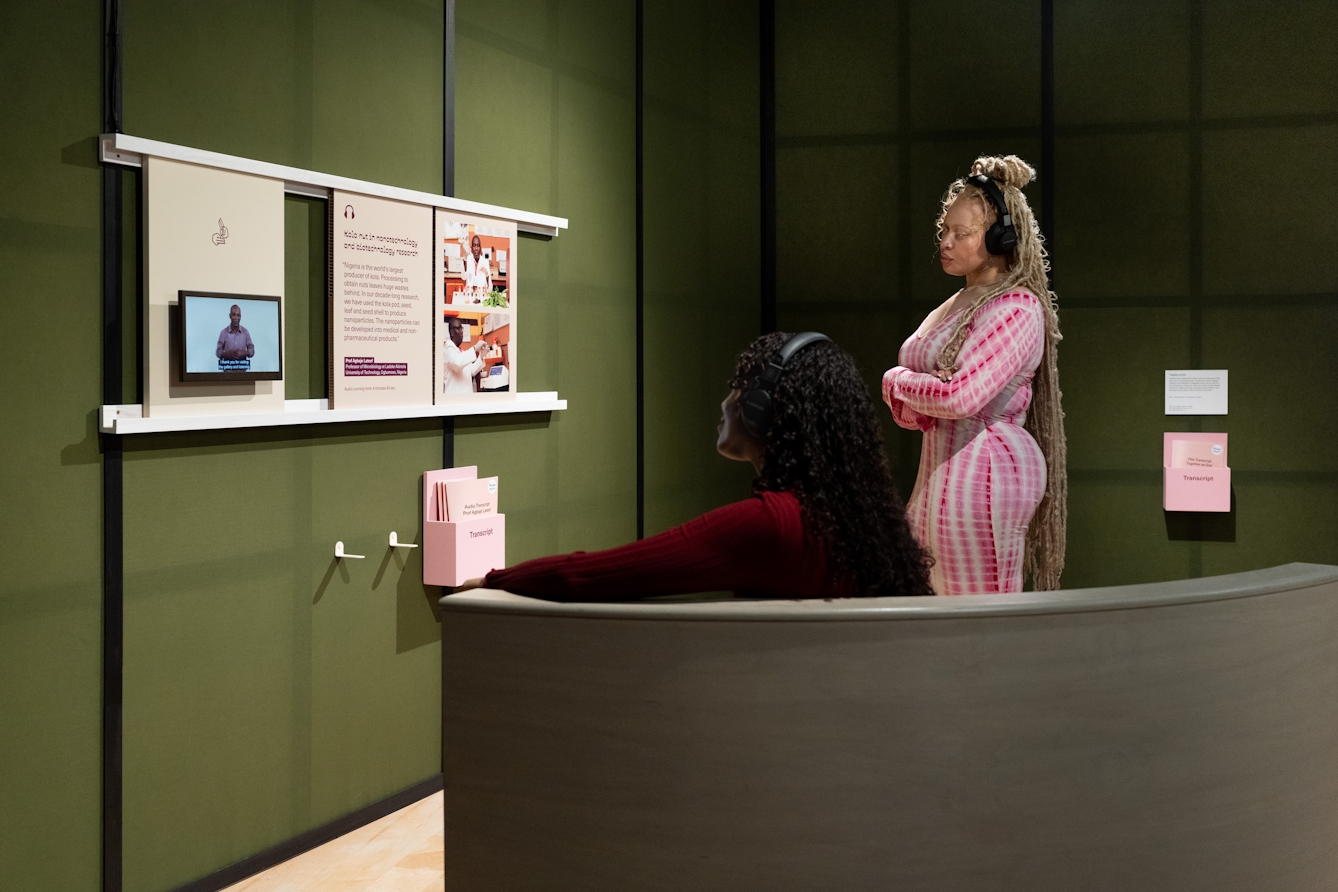
Sound works
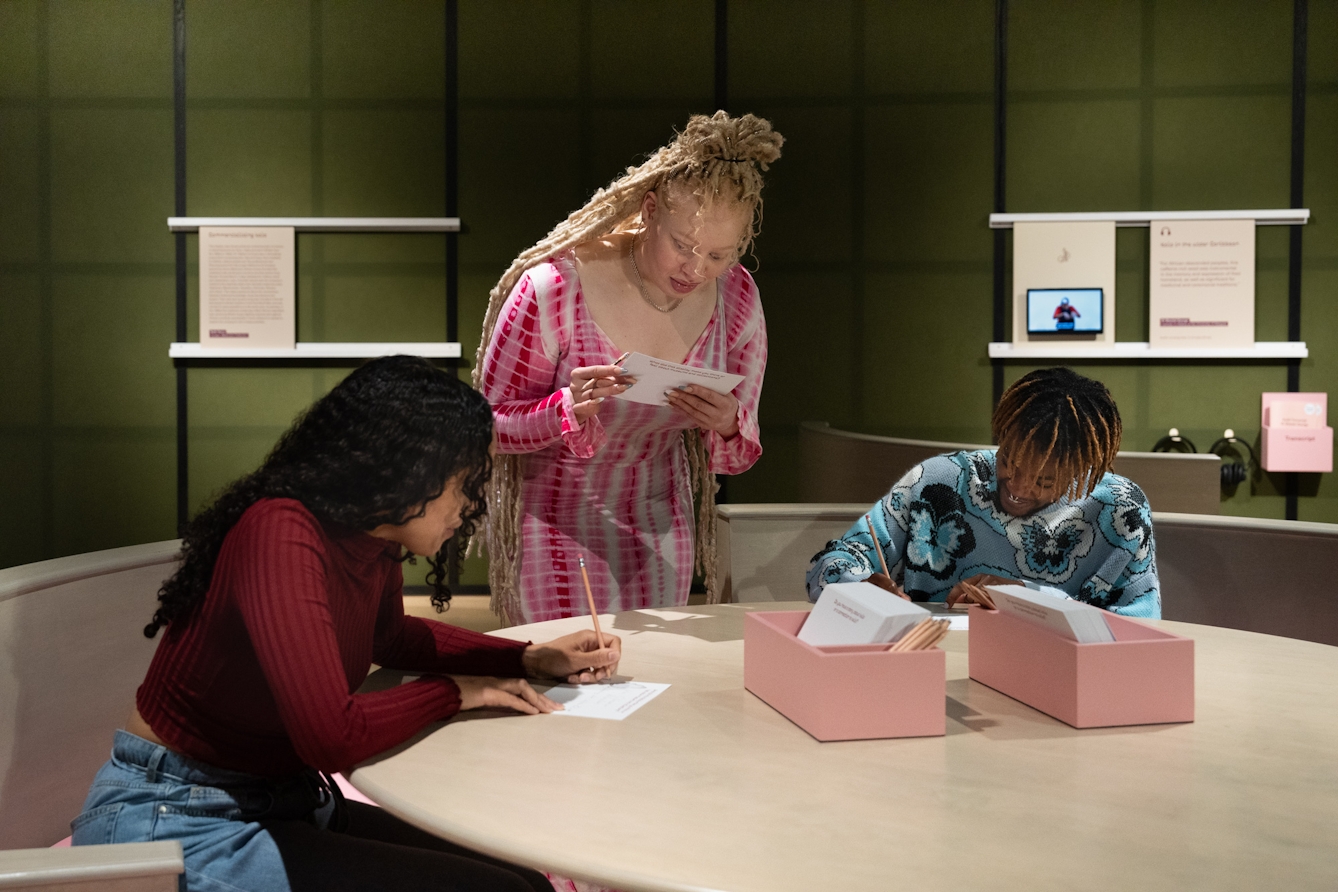
There is also an activity area. This has postcards that you can write or draw on.
Sensory information
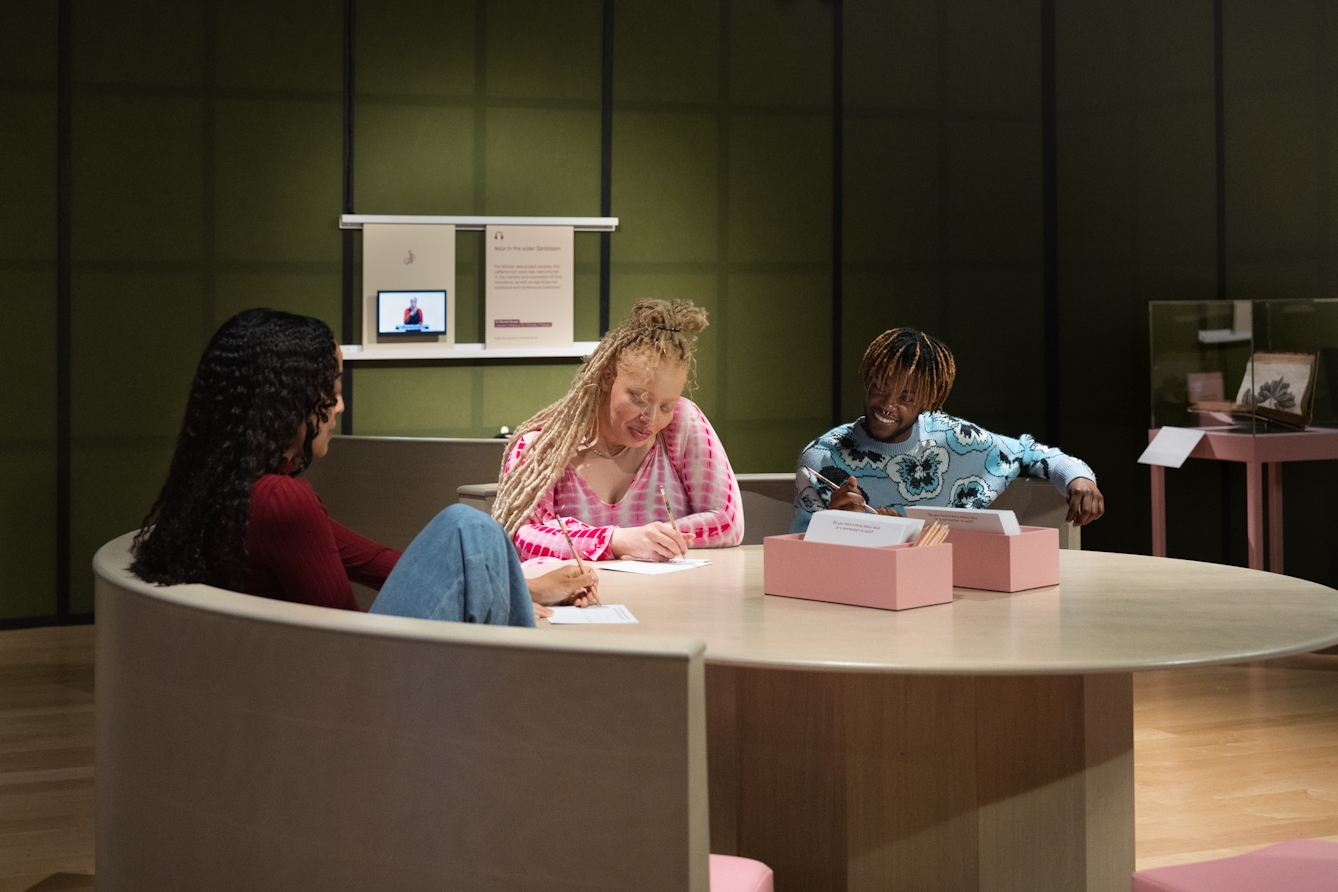
You can speak or chat in this space.
What is in room 1

The kola nut is a small fruit that grows on trees in West African forests.
This exhibition tells many different stories about the kola nut.
Kola nut is very important in West Africa.
People in West Africa use it for many different things:
- food
- medicine
- religion
- gifts to visitors.
Kola nut was also used in the first ‘cola’ drinks, like Coca-Cola.
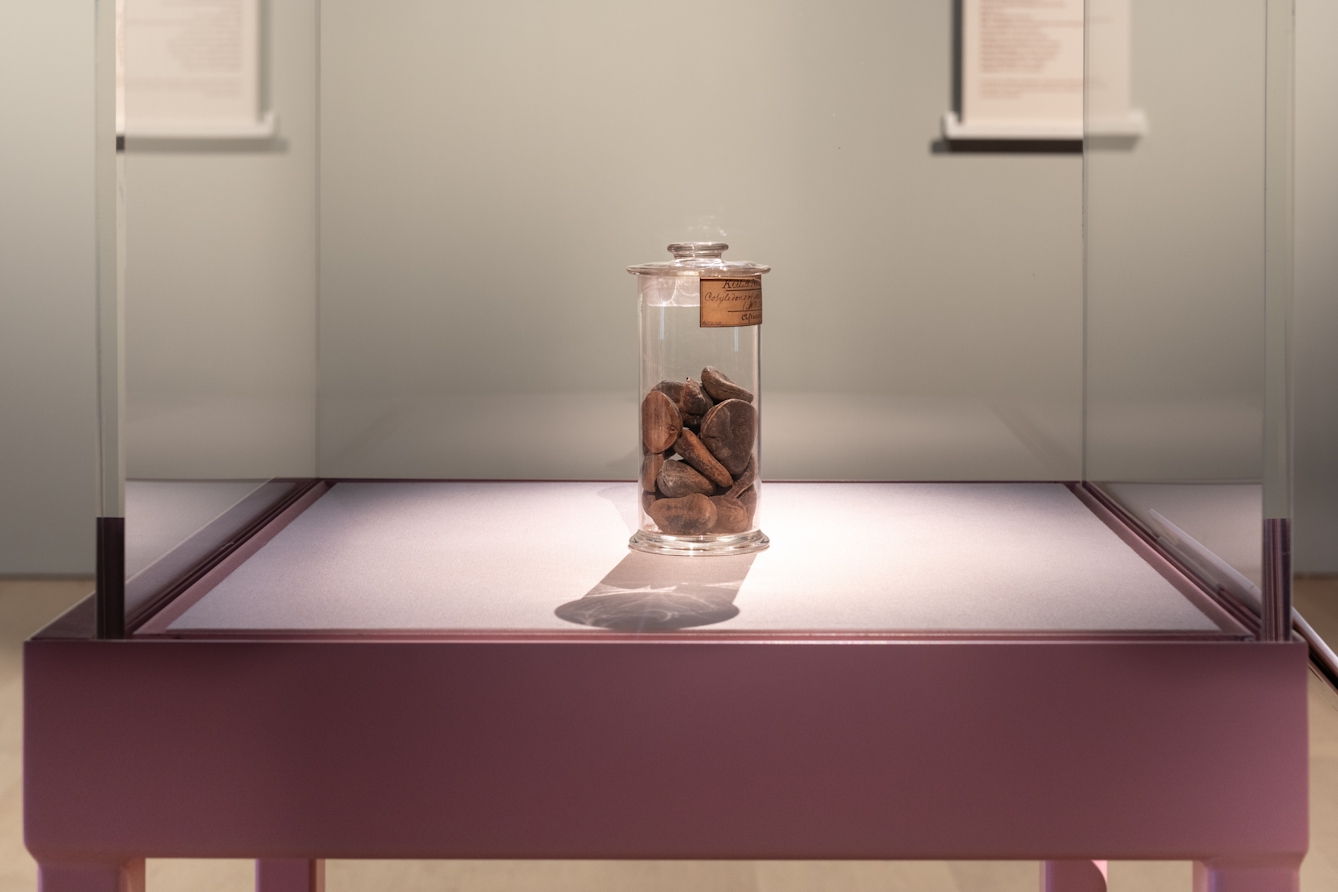
Kola nuts in glass specimen jar
This jar of kola nuts is from our collection. They were collected in Africa around 100 years ago and brought to England.
We do not know where in Africa they were collected. The people who collected them did not write this down.
They are in our collection because they are used in medicine. Wellcome has a big collection of things to do with medicine.

Introduction by Nathan Bossoh
This is a sound clip you can listen to out loud on speakers. It is three minutes long.
Nathan Bossoh planned this exhibition.
Nathan says that museums have not told many good stories about kola.
We tell lots of different stories about kola in this exhibition.
Nathan is playing the music you can hear. It is a West African-style rhythm.
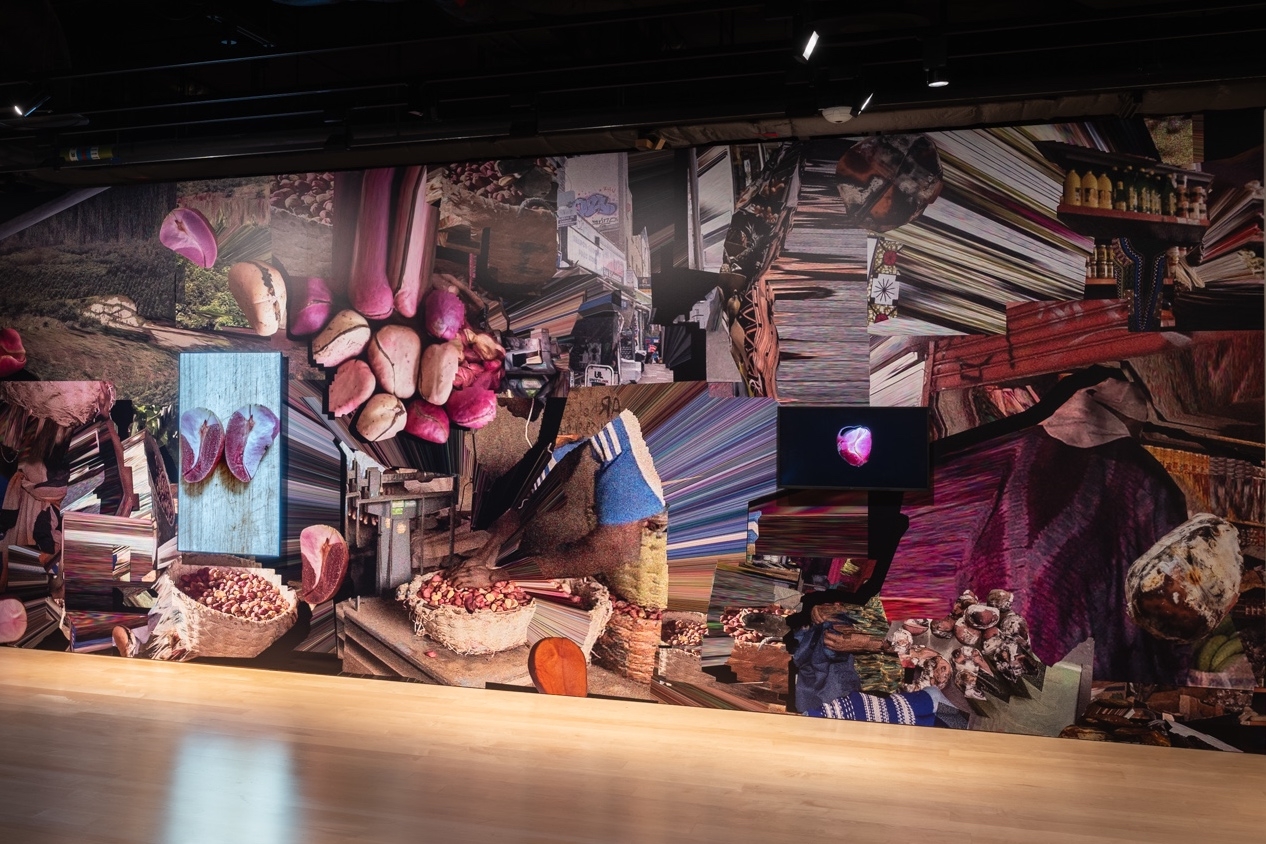
Kola Assemblages by Ibiye Camp
This artwork is two films and wallpaper made up of lots of pictures. It is about how kola nuts change colour and shape when they are sent from West Africa to London.
The wallpaper shows kola nuts being grown in West Africa, and being sold in London.
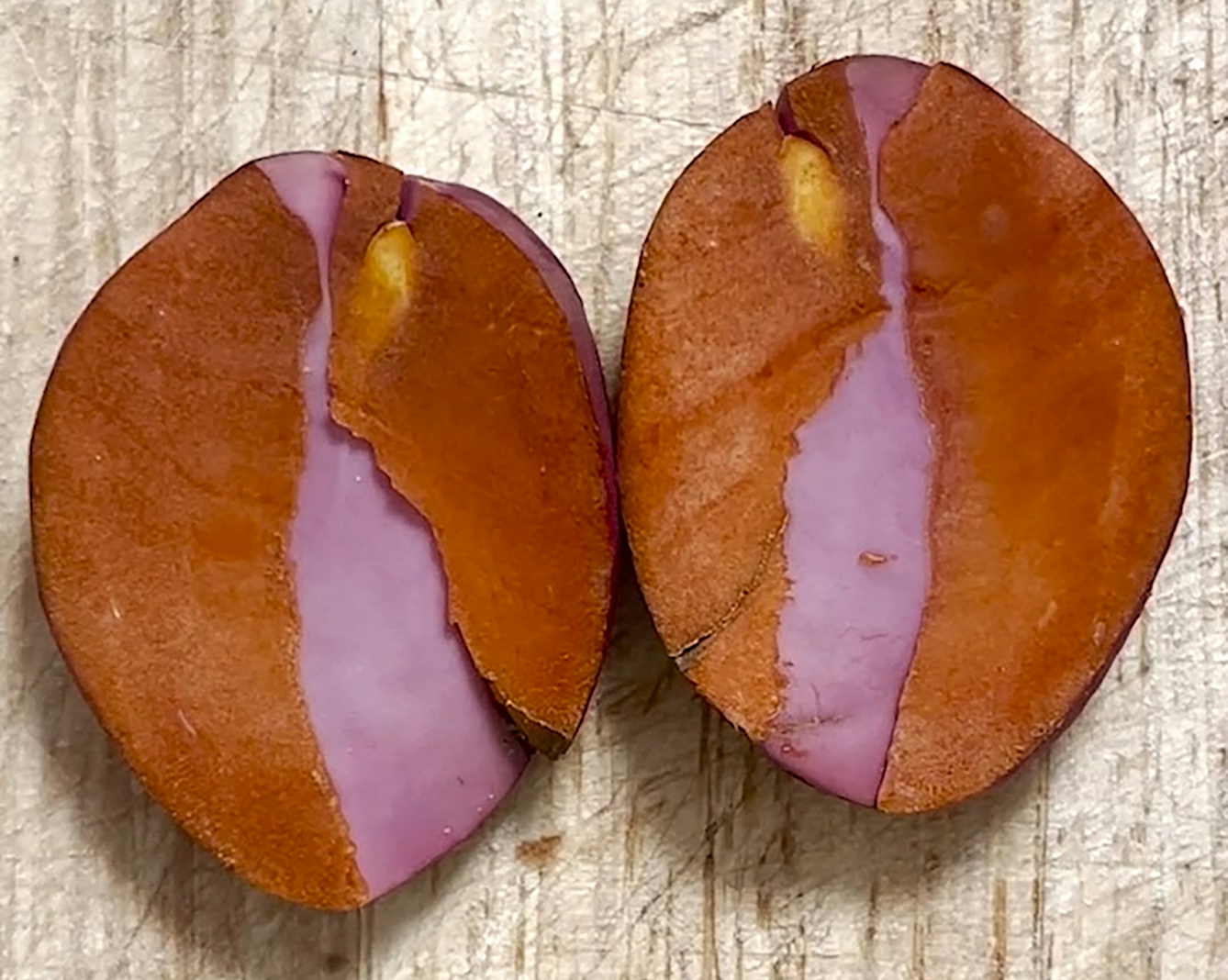
The film on the left shows how kola nuts change colour from pink to orangey-brown when you cut them open.
What is in room 2
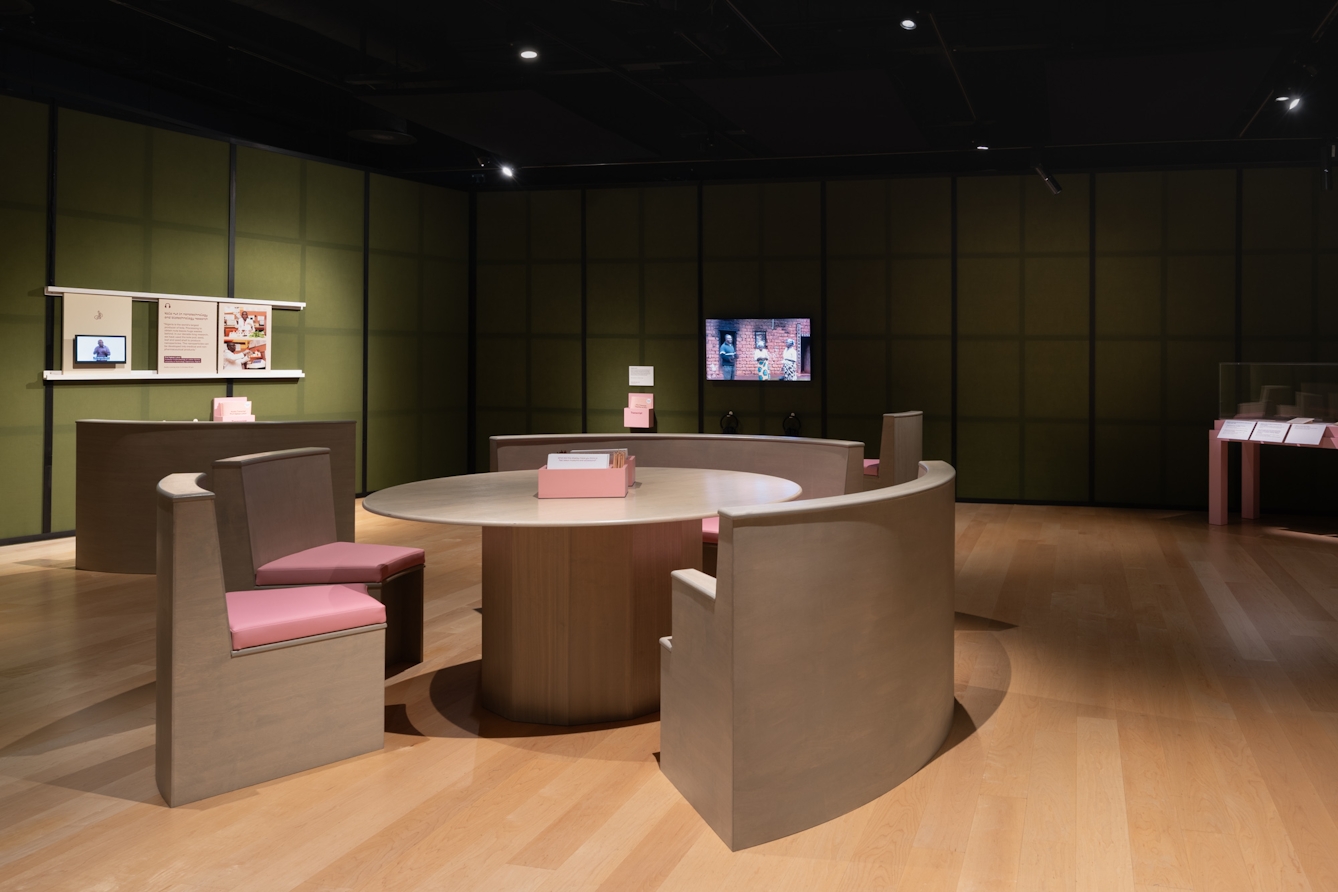
Lots of different people tell stories about kola in this room.
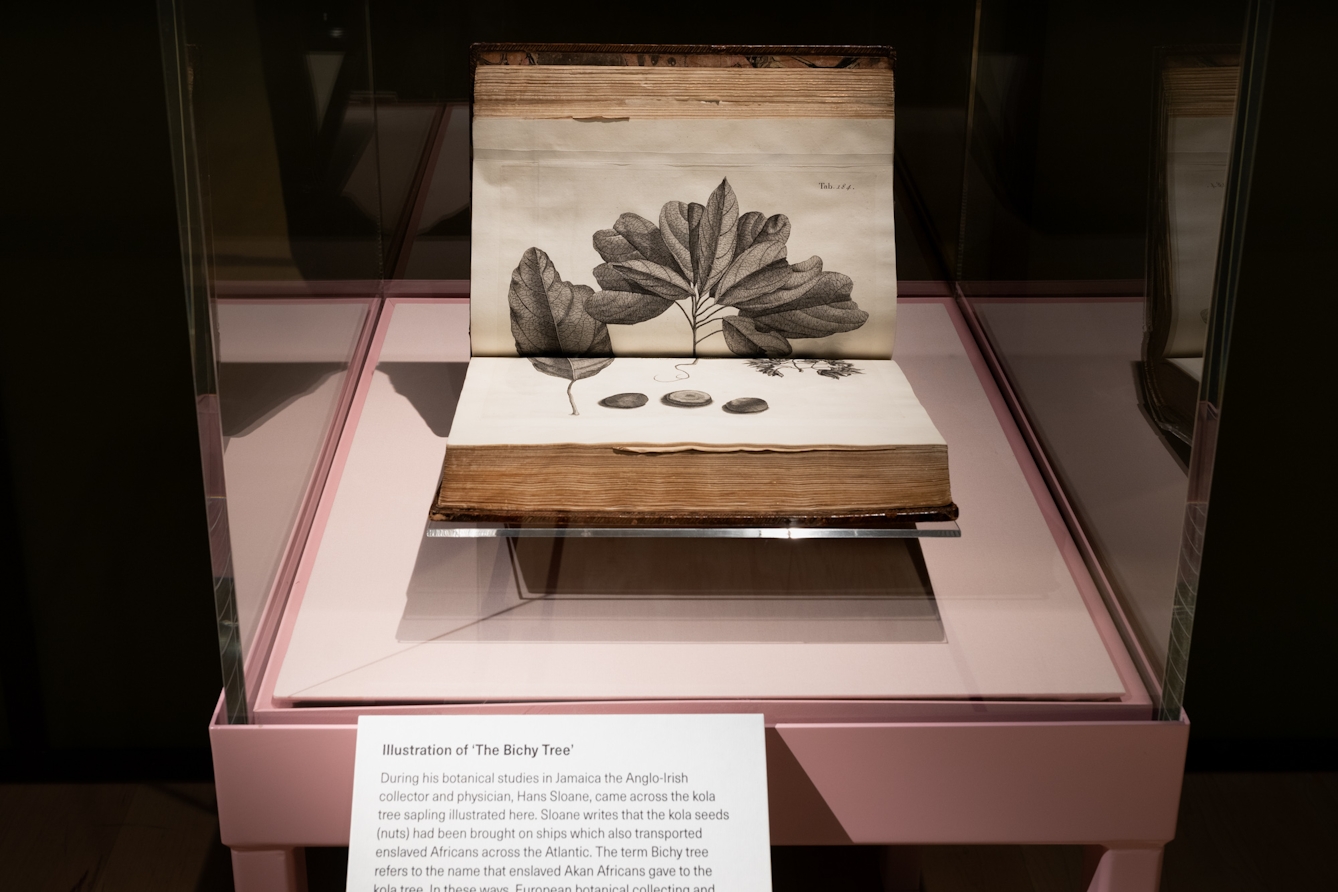
Illustration of ‘The Bichy Tree’
This book has pictures of plants and animals in Jamaica.
Jamaica is a country in the Caribbean.
The Caribbean is a group of islands in the Caribbean Sea. This is between North America and South America.
This page from the book shows the bichy tree.
This is the name for the kola tree in the Caribbean.
The book is from the year 1725.
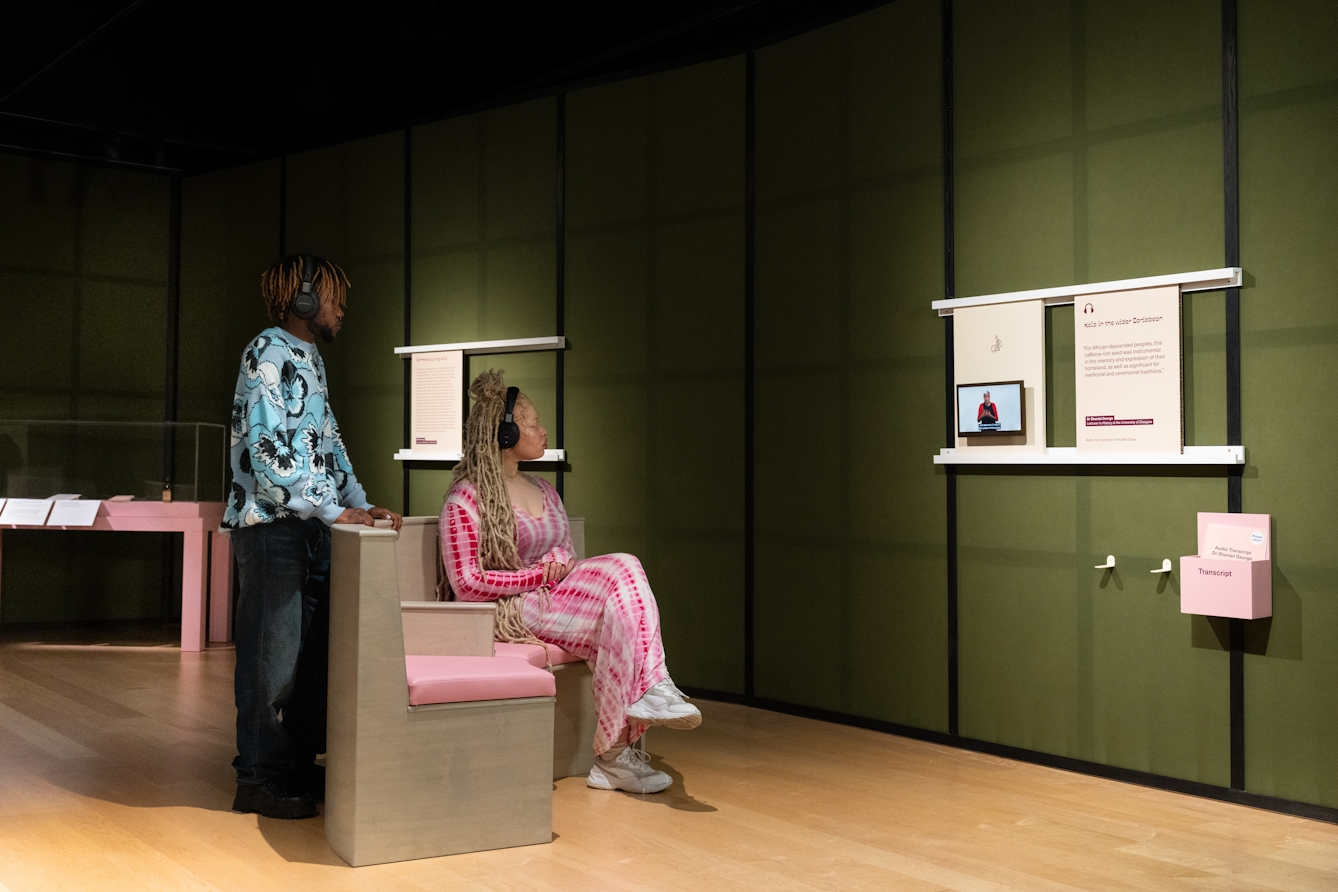
Kola in the wider Caribbean
This is a sound clip you can listen to with headphones. It is five minutes long.
Shantel George is a historian. A historian studies the past.
Shantel studies the history of kola nut in the Caribbean.
She talks about how kola nut is important to some people in the Caribbean. This is because their families came from parts of Africa where kola nut is important.
Kola nut was used by enslaved people as:
- a medicine
- ways to remember their home and traditions.
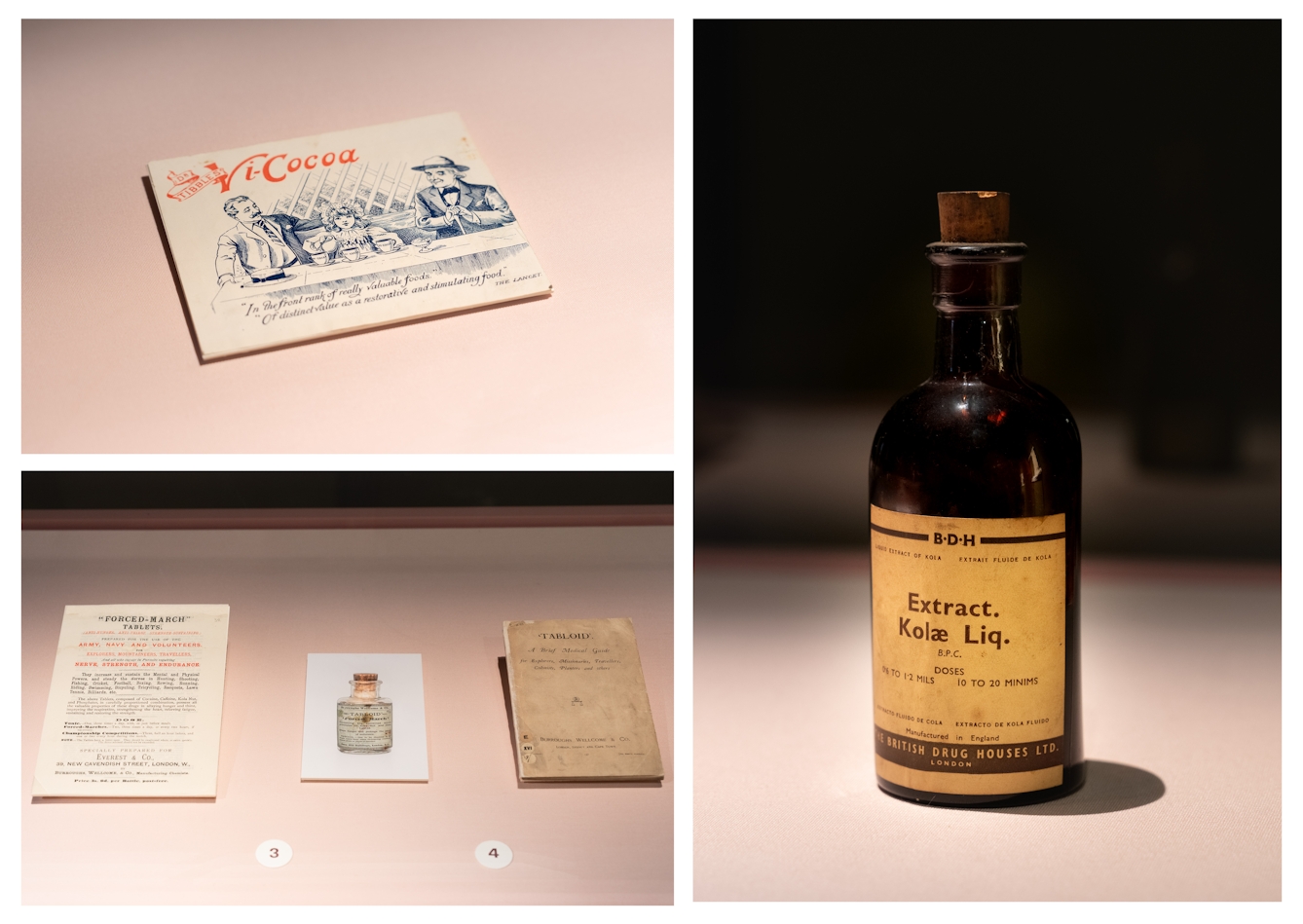
Commercialised kola
These drinks and medicines containing kola nut were sold around 100 years ago.
Companies told people the drinks and medicines would give them energy or make them feel better.
One of these companies who sold these things was called Burroughs Wellcome and Company.
Burroughs Wellcome and Company sold medicine to the British army. The British soldiers took the medicine to make them better at fighting wars. Some of this fighting was against African people.
This means they were using a medicine made from an African plant to go to war against African people.

‘Together as One’
This film is 11 minutes long. You can start watching at any time.
You can listen on headphones. People in the film speak the Nso’ language. There are subtitles in English.
This film is about the different ways that the Nso’ people in Cameroon use kola nuts. Cameroon is in West Africa.
Some ways that people use kola nuts are:
- to celebrate when guests visit
- to worship God. Muslims and Christians use kola nuts to worship God
- to stay awake and do more schoolwork
- to make money by selling them
- to celebrate the Nso’ culture.

Kola nut in nanotechnology and biotechnology research
This is a sound clip you can listen to with headphones. It is four and a half minutes long.

Agbaje Lateef is a scientist working in Nigeria. A scientist studies how the world works. Some scientists like Agbaje study kola plants.
Agbaje uses parts of the plant that are usually thrown away, like pods and shells.
He studies the chemicals that come from the pods and shells.
He tests new ways to use these chemicals. They could:
- help plants grow
- kill germs
- stop food going rotten.
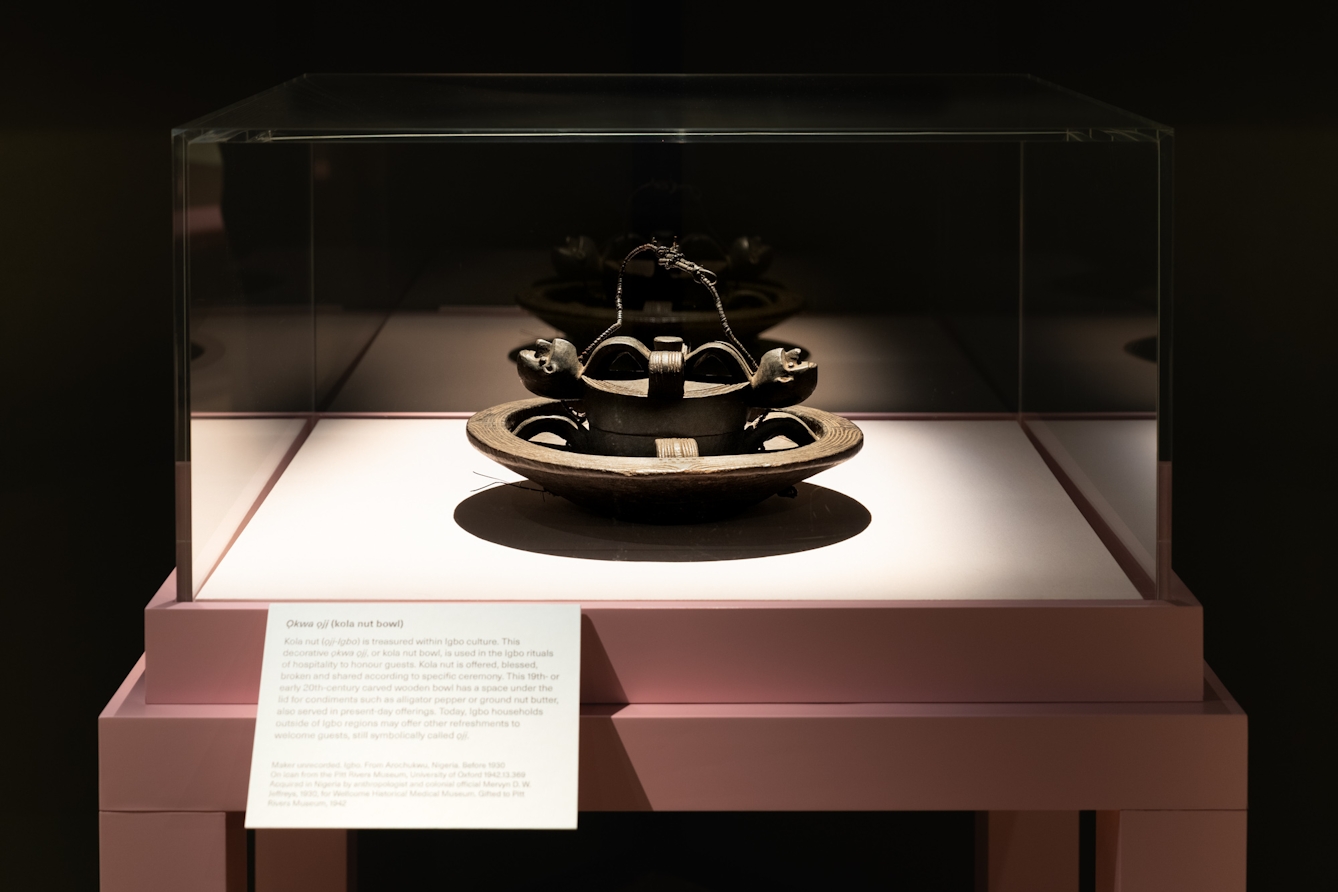
ọkwa ọjị (kola-nut bowl)
This bowl is from Arochukwu in Nigeria. Igbo people in Nigeria used it to offer kola nuts to important guests visiting a house or village.
Kola nuts are very important in Igbo society.
The person who made the bowl was an Igbo artist. We do not know their name.
The bowl is made of carved wood. It is around 100 years old.
Igbo families today welcome guests with either kola nuts or other foods.
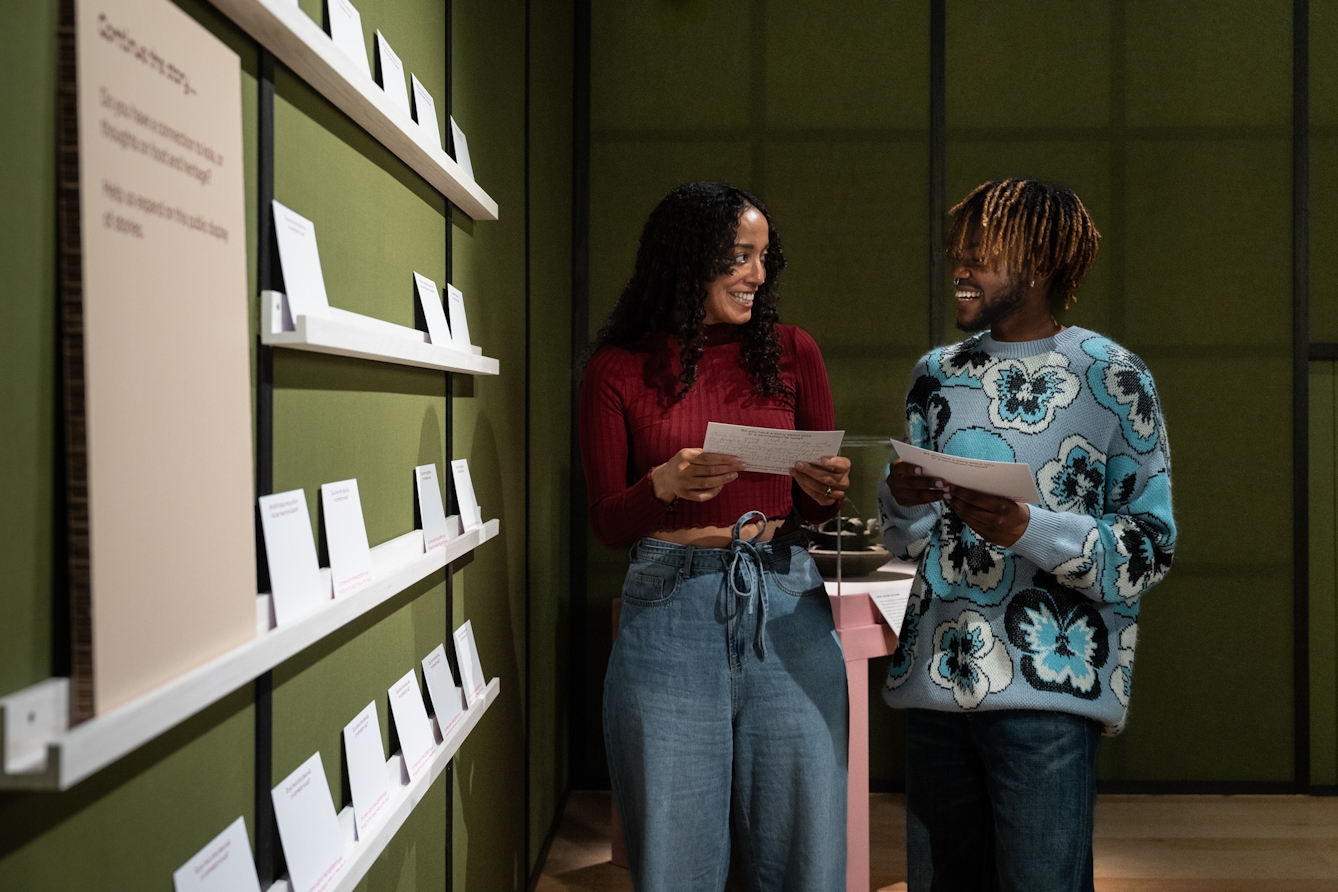
Continue the story…
In the activity area you can write or draw on a postcard to add your ideas.
You can write or draw your thoughts about:
- the exhibition
- what you already know about kola
- new things you learned
- foods that remind you of your family background.
You do not have to write or draw anything. Only write or draw something if you want to.
You can look at what other people have written or drawn.
Exhibition accessibility
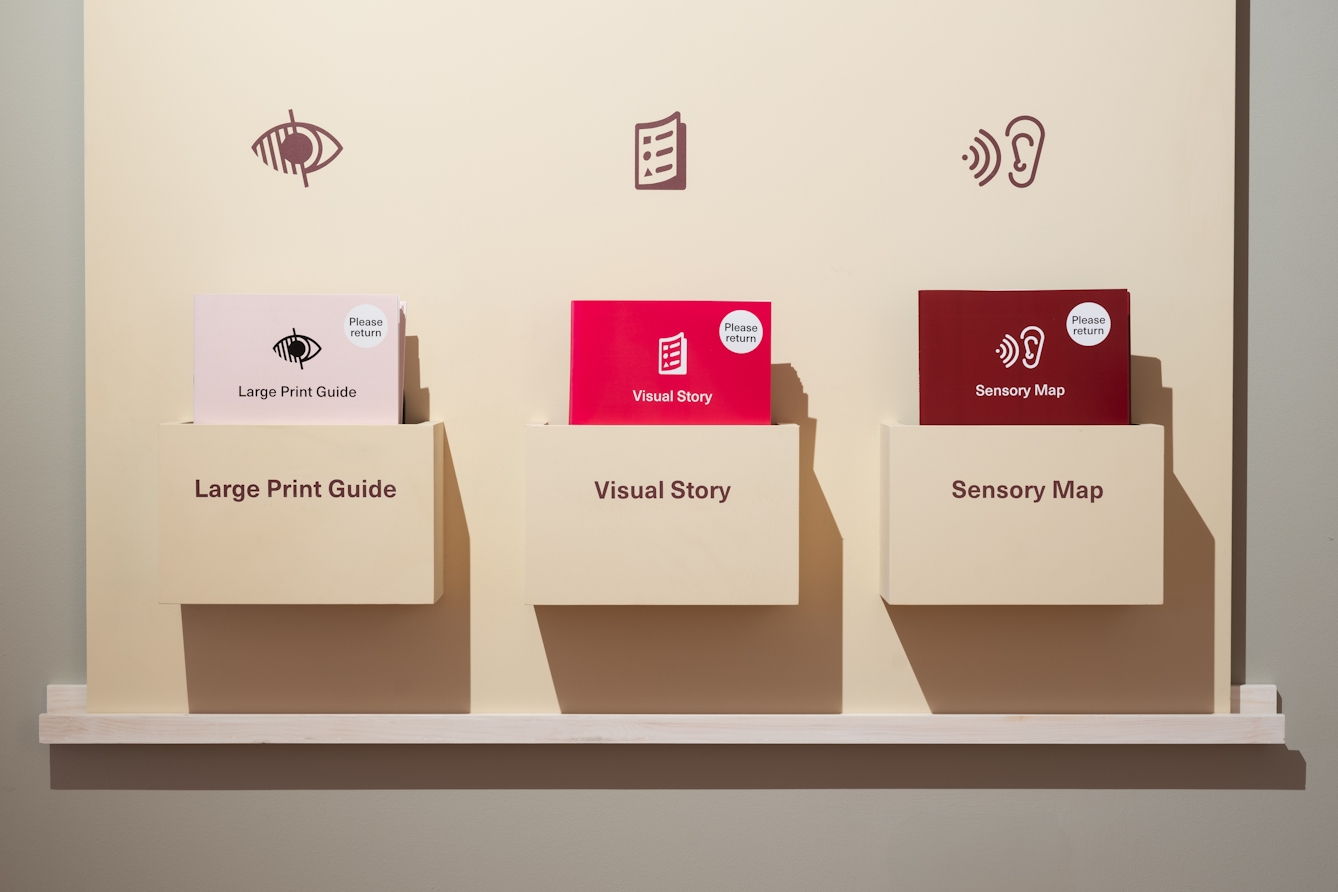
Outside the exhibition you will see this text panel.
Here you will find information about our accessible resources.
You can also pick up:
- A large-print guide.
- A visual story.
- A sensory map. A sensory map shows you things like where there is loud sound, bright lights, or seating.
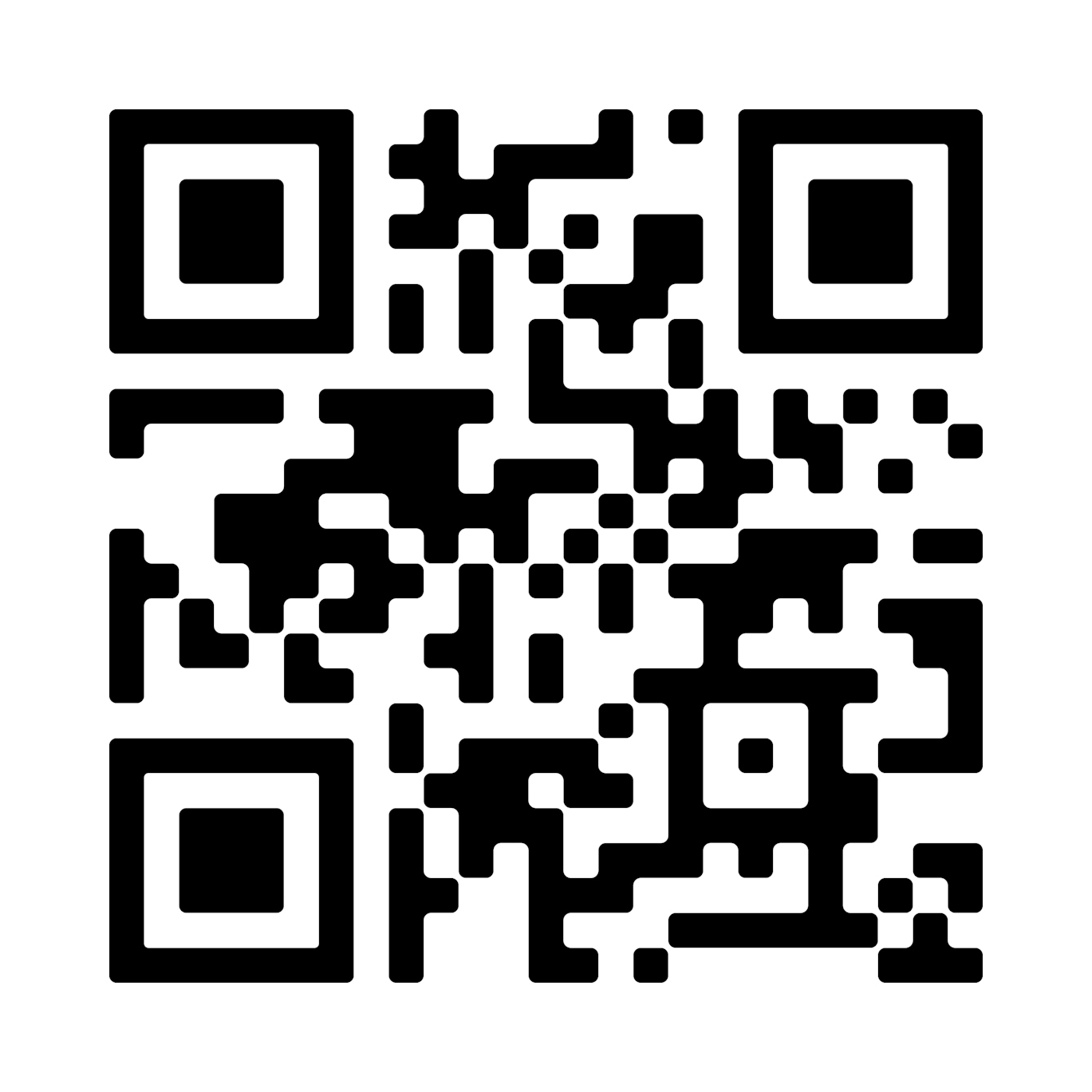
You can get all the same information that is on the exhibition labels and panels by scanning the QR code with your phone. The information can be read by a screen reader.
To scan a QR code:
1) Open the camera on your phone.
2) Point it at the QR code.
3) Click on the link that appears.
If you do not know how to scan a QR code, we can help you.
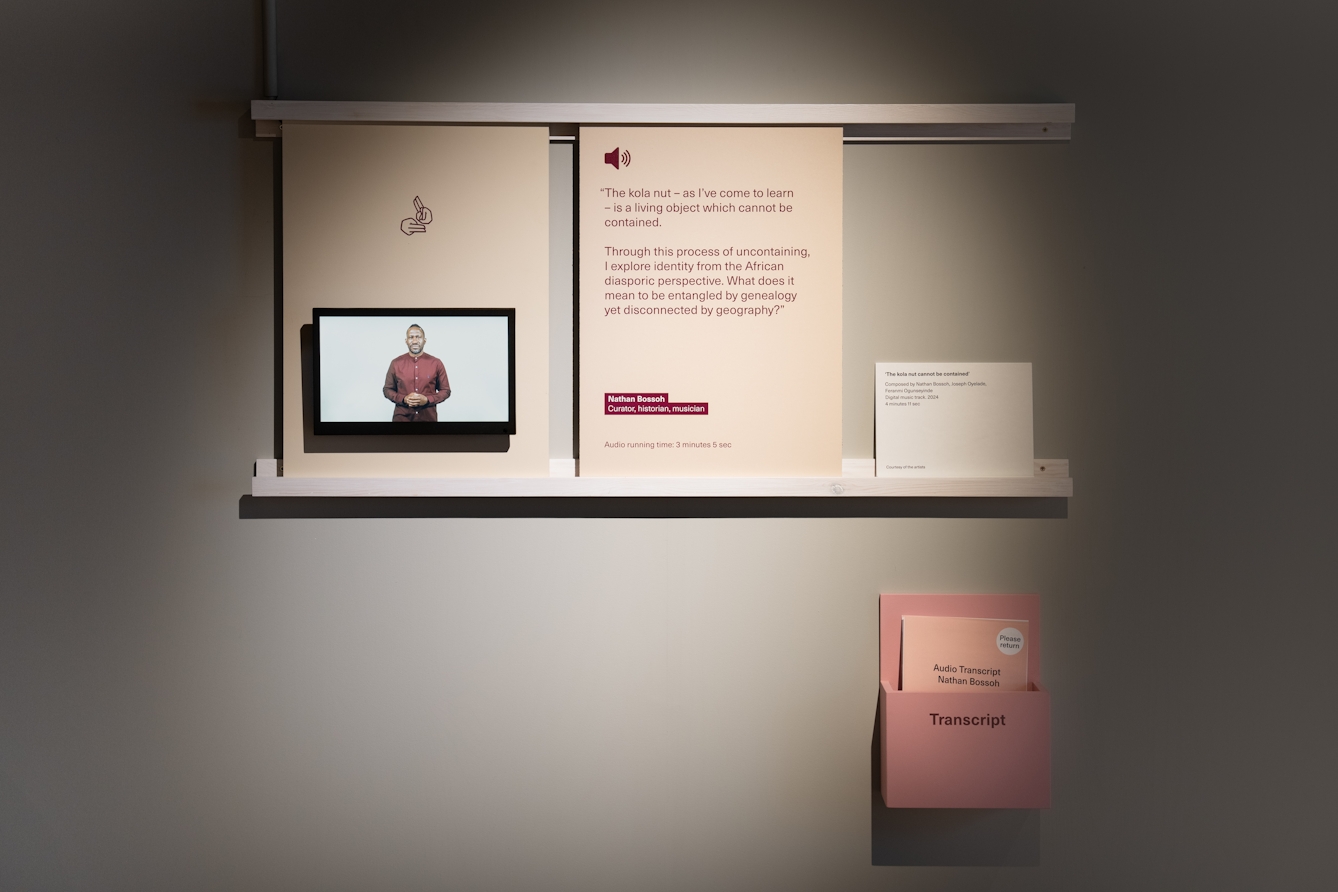
Sound clips in this display have:
- British Sign Language videos
- written transcripts of the words from the clips.
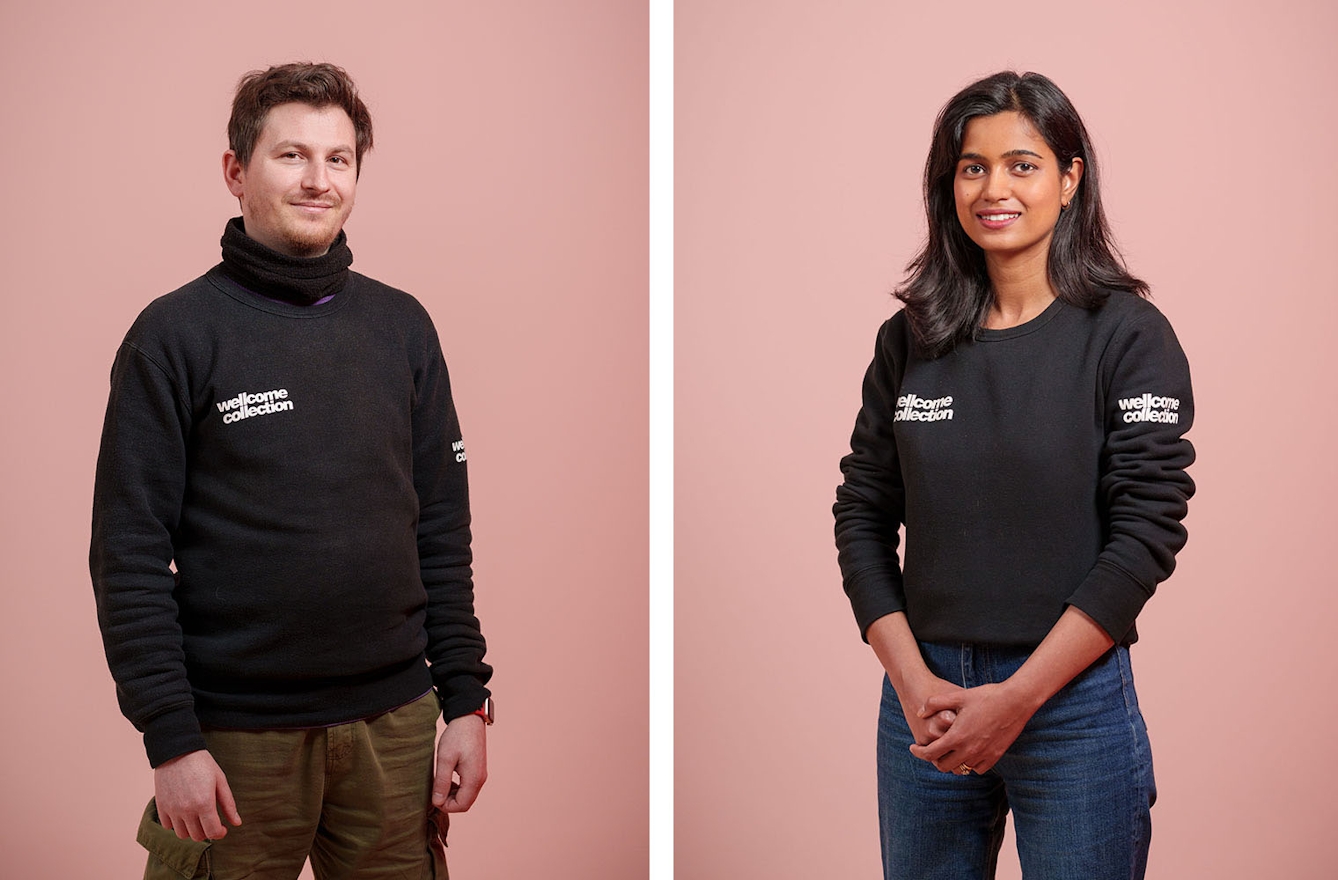
If you need help with anything, you can ask a member of gallery staff.
